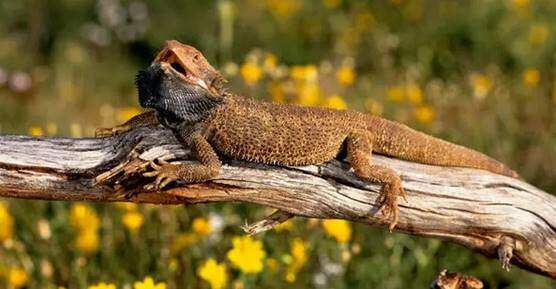Bearded dragons use their mouths to eat, taste, breathing, and thermoregulation. It has a short, stocky tongue that extends outwards but not so much and has a sticky surface to guide its prey into its mouth.
A healthy beardie’s mouth and tongue should be vivid light pinkish with a slight yellow tint without any sores, swellings, discoloration, or any other abnormalities.

Some behaviors and issues include involving the mouth or tongue include:
- Mouth opening or gaping – It is a sign of aggression, optimum basking temperature (if it occurs as they bask), yawning, or respiratory infections that may cause mouth breathing.
- Licking – Licking or flickering their tongue helps them taste for smell things. Its surface collects microscopic particles and takes them to their sensory organ, the Jacobson’s organ.
- White, yellowish or greyish patches – The most often culprit blamed for these patches is mouth rot. Gum swelling, cottage-like puss, loose teeth, reduced appetite, and so on are other common signs. Injuries may also make their mouth patchy.
- Pale pink – This is an indication that your reptile is anemic, and they may also have a pale tongue tip.
Proper oral, as well as dental care, are essential in avoiding oral infection, gum inflammation (gingivitis). Your herp will advise you accordingly.
